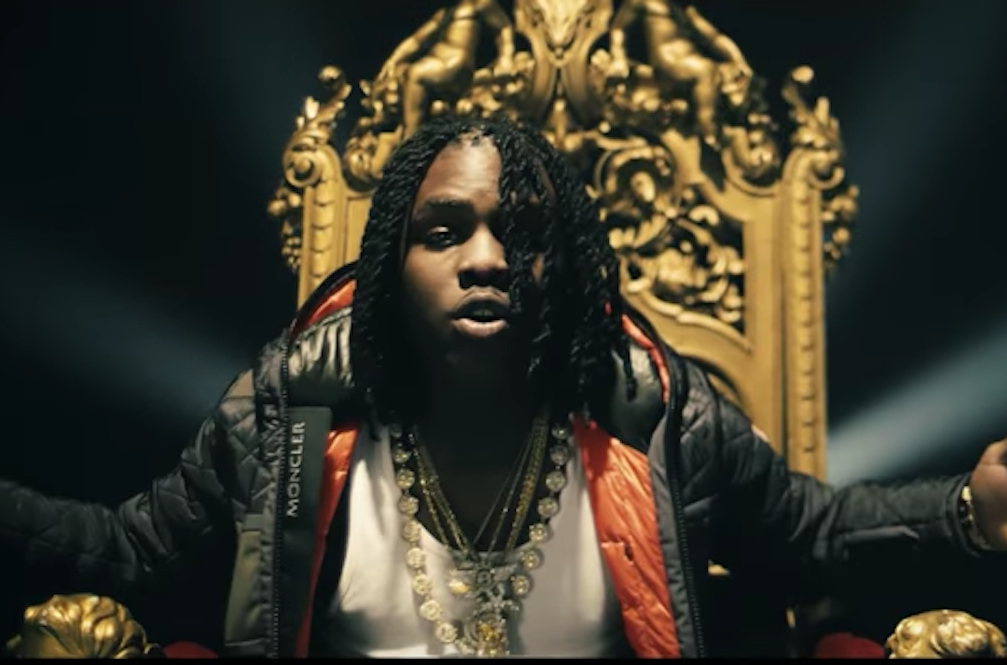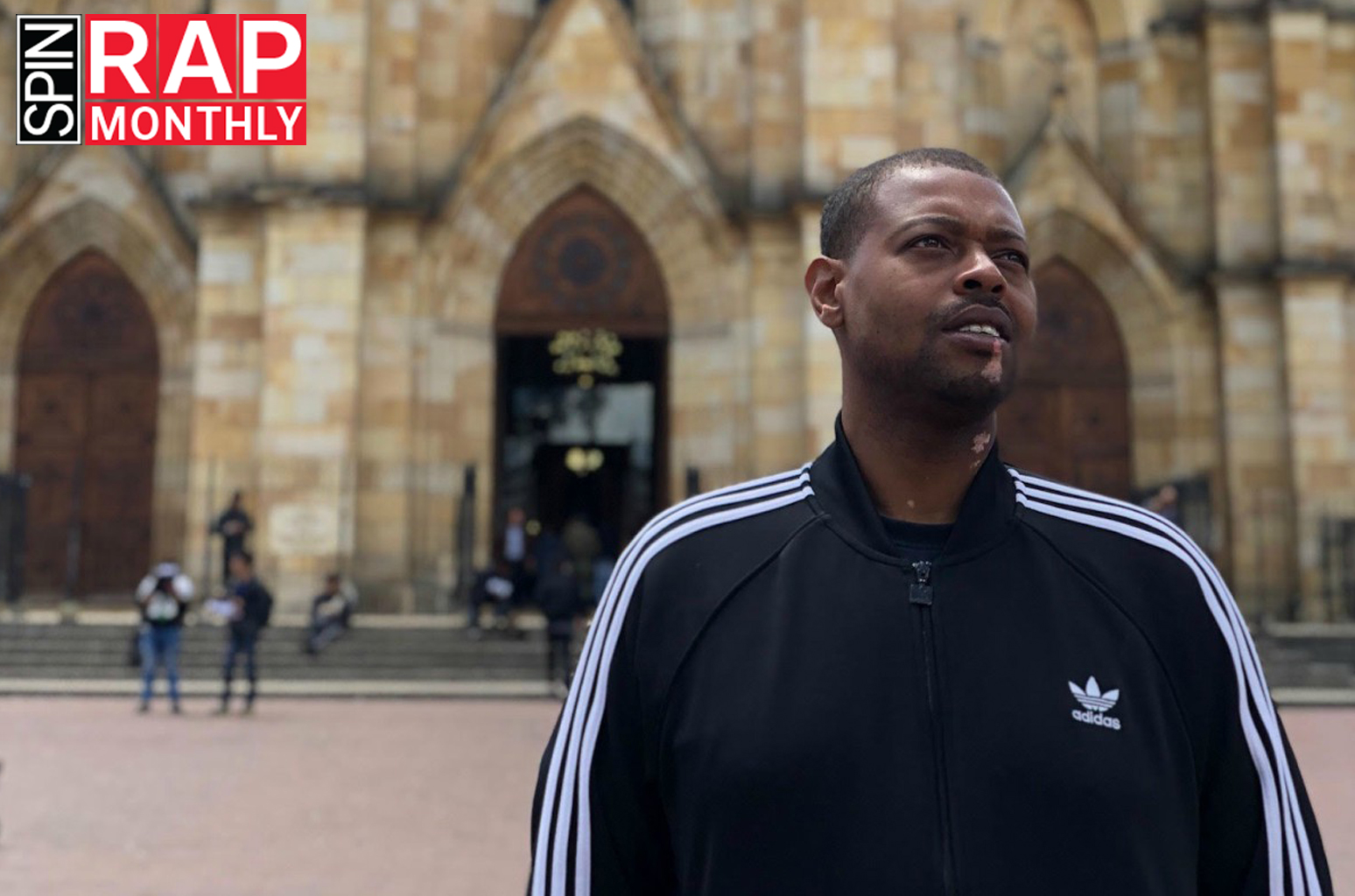It may have seemed like Chief Keef disappeared in 2016. Depending on the nature of your feeds, you may have gotten used to him popping up in the news due to his prolificacy as an artist and/or his antics as a human. But last year was a quiet one for the one-time most notorious man in rap. He appeared on some newly released songs that scarcely garnered any attention, and managed to not ingratiate himself into any controversy. If you wanted to hear from Keef you could—his social media remained active and scattershot, and he also continued to maintain adorable Instagram accounts for his small children—but if you didn’t, well then you probably didn’t.
That silence was perhaps not entirely by choice. Back in 2015, Keef signed a deal with the music arm of FilmOn, a fledging media company run by the Greek heir Alki David. It went south more or less immediately, which wasn’t a surprise since Keef is notoriously enigmatic and individualistic (if it was your job to wrangle his career, you would probably use harsher terminology) and FilmOn has no history of successfully nurturing and promoting musicians. At the end of 2015, David said he suspended Keef’s contract over delinquency, and then sued his management team and collaborators for allegedly releasing music without the label’s consent. The story fell out of the news cycle as 2016 dawned, but his contract with FilmOn remained intact, and rather than continuing to inflame David, Keef basically decided to take the year off, or so was the word in Chicago. That he released a new mixtape, titled Two Zero One Seven, on the very first day of the new year was not a coincidence.
It did feel like Keef needed a reset, though, regardless of why. Though he stopped being a mainstream concern shortly after the release of his debut album Finally Rich, he spent the following years releasing hundreds of songs—some of which were popular, some of which were good, and some of which were both. When referring to Keef, “popular” and “good” both need unpacking.
Keef has not had a nationally recognized hit single since 2012, when drill music was considered the hottest trend in rap. But Keef has held onto a sizable fanbase online and in his hometown of Chicago, which has helped him rack up YouTube views that would be the envy of many artists with giant major label apparatuses at their disposal. The video for his song “Earned It,” put up on his own YouTube account, has amassed over 52 million views through pure word of mouth. “Faneto,” released near the end of 2014, was the true successor to his stomping breakthrough “Don’t Like,” but it was as underground a hit as one can realistically achieve in today’s hyper-connected world. (In true Keef fashion, he didn’t get around to releasing a real video for “Faneto” until a year and a half later.)
“Faneto,” as the above linked supercut of hundreds of people moshing to it indicates, has the pulsating energy of “Don’t Like,” but it also feels like a skewed application of that blueprint, like if you tried to build a piece of Ikea furniture while stoned. The beat drops out frequently, and Keef’s doodled rapping feels at first blush like a placeholder for more considered lyrics. “Earned It,” which communicates a menacing celebration of wealth through a mumbled prescription drug haze, boiled Keef’s music down even further. These were his two biggest songs of this time, but he was making tons of insular, experimental versions of conventional trap music, much of it self-produced from his Los Angeles mansion, which based on his Instagram at the time was permanently steamed with weed smoke. “Make It Count” (6 million views) feels like Keef is rapping into one of your ears while the beat plays through an earbud in the other. “Gucci Gang” (another 6 million) sounds like he’s talking to the beat from Gucci Mane’s “Lemonade” as it’s repeatedly dunked in a tank of water. Even a more conventionally catchy track like the gulping “How It Go” (9 million views) felt untethered from the rest of contemporary rap. Before anyone cared about 21 Savage, Keef was strip-mining drill music to get at what lay beneath.
Still, these songs are acquired tastes, to put it mildly, and they’re also the best–or at least most popular—examples plucked from a sprawling discography that frequently burrowed inward past the point of accessibility. He released full mixtapes like 2013’s Almighty So that felt like a long hangover transmuted into 128 kbps mp3s, and even his more official projects, like 2015’s Bang 3, failed to tip him back towards the mainstream while also not quite communicating the unique experimentalism of his YouTube loosies. He was bordering on becoming a Lil B-esque figure, churning out cubist versions of rap from the genre’s margins, but minus the fascination from cultural institutions like MIT. (That a lot of what Keef was doing vocally in this outré period was later upstreamed by now fêted artists like Lil Uzi Vert is a tale for another time.)
In any event, Keef could have gone on like this forever, and still might. But the music he’s put out so far in 2017 suggests that he may be pulling himself out of the wormhole. This is most apparent in “Come Down,” a new song with Rae Sremmurd that was produced by Mike Will Made-It. It will appear on the latter’s upcoming album Ransom 2, alongside tracks featuring artists like Pharrell, Future, Kendrick Lamar, and Lil Wayne. It’s the most high-profile look Keef has landed in years, and he more than makes the most of it. “Come Down” situates the drunken melodicism of a track like “How It Go” within the context of Rae Sremmurd’s more approachable, if still off-kilter, party anthems. But there’s also a depth to the song that makes it compulsively replayable. “Let it rain, baby / All fall down, all come down,” Keef warbles on the song’s chorus. “I’d be insane to complain, baby / I’m so high, I don’t wanna come down.” The track is celebratory, but there’s also a slight undercurrent of melancholia in Keef’s twang that is reminiscent of nothing less than Nelly and Tim McGraw’s iconic “Over and Over.”
That Keef may be opening himself back up to the world around him is also evident in “Can You Be My Friend,” a single released last month that feels, particularly at this moment in time, like Keef’s attempt at making dancehall. Still, that’s not quite right—the beat, produced by his old friend Young Chop, is blindingly bright and hyper-pop in a way that feels more indebted to the massive Ja Rule singles produced by Irv Gotti way back when. And Keef doesn’t really go all the way—the song has a catchy little hook, but it’s still muffled and hard to imagine being played on the radio or at a party. It feels true to Keef’s aesthetic, and is enjoyable, but also like a missed opportunity.
Whether Keef even wants those opportunities in an open question. He didn’t seem to care even when his career was peaking—leaving Wiz Khalifa and 50 Cent in the Las Vegas desert at a video shoot for his most anthemic song—and he certainly did not chase mainstream success in the period after that. My hope is that 2017 sees Keef spending a little more time in our orbit, though a recent serious arrest may jeopardize that. “Reloaded,” a stilted banger released in February, shares more in common with his songs from the past few years. Two Zero One Seven probably splits the difference. If Keef does return back into his own headspace, diving even deeper, or in another direction entirely, it will be nothing if not a trip, and sometimes fun to listen to, too.





